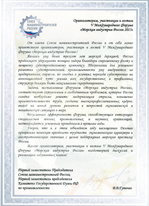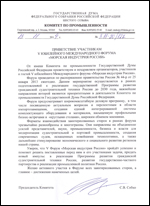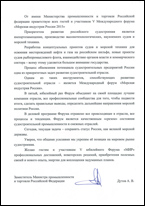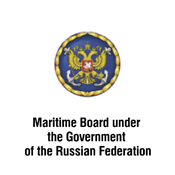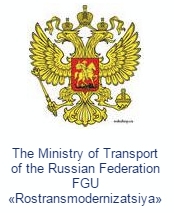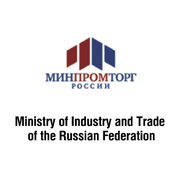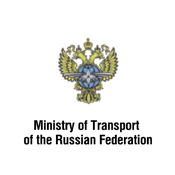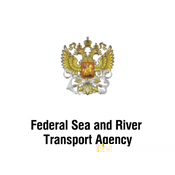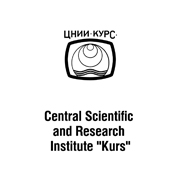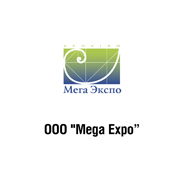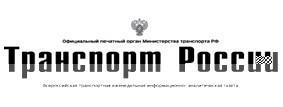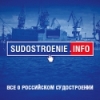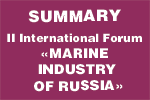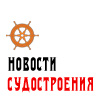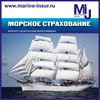“Marine Industry of Russia”
Exhibition Hall,
19-21 May 2015
The Forum has opened!
May 07, 2015
Greetings from the Ministry of Industry and Trade of the Russian Federation
January 28, 2015
The Forum organizers received the greeting from Gutenev V.V., the First Deputy Chairman of the Russian Engineering Union.
January 15, 2015
The Government of the Russian Federation addressed a welcome letter to the V International Forum Marine Industry of Russia.
Murmansk – the territory of Arctic technologies Interview with the Deputy Governor of Murmansk region, G.I. Stratiya for the Marine Industry of Russia Forum portal
February 27, 2015
The International Forum Marine Industry of Russia – traditional platform for discussing strategic development plans for the shipbuilding industry and regional projects. In 2014, representatives of two maritime regions of Russia – Murmansk and Arkhangelsk – held a presentation of the global tasks for development of their territories.
On the threshold of the V jubilee Forum, we publish the interview – reports on the state of affairs in these regions today.
Interview with the Deputy Governor of Murmansk region, G.I. Stratiya
for the Marine Industry of Russia Forum portal
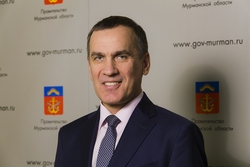 The Action Plan for implementation of the Social and Economic Development Strategy of Murmansk region until 2020 includes the provision called “Establishment of innovative cluster of Arctic technologies”. In this connection, there are several questions:
The Action Plan for implementation of the Social and Economic Development Strategy of Murmansk region until 2020 includes the provision called “Establishment of innovative cluster of Arctic technologies”. In this connection, there are several questions:
Various structures exist which are actively involved in the Arctic development – from research and technologies to financing and ecology. Why is the own special cluster required in the region?
Indeed, the Arctic development is currently one of priority federal projects. According to the Investment Strategy of Murmansk region until 2020 and for the period until 2025 (Investment Strategy), the region shall become the strategic center of the Arctic zone of the Russian Federation, the financial and intellectual leading region, and the main service center for marine activity in the Arctic zone of the Russian Federation.
The region will play the defining role in implementation of national interests of Russia in the Arctic and achievement of key objectives of the national Arctic policy in the spheres of of social and economic development, military security, national border protection and control, science and technologies, and international cooperation. The Investment Strategy envisages a substantial increase of innovative orientation of economy and diversification of its structure: at a high level of industrial and manufacturing specialization, the service sector gains more and more specific weight.
To achieve these goals, coordinated interaction is required for R&D; and educational establishments of Murmansk region, small and micro enterprises in innovation sector, industrial enterprises, companies, holdings and organizations interested in obtaining new technologies and venture funds. These objectives primarily determine the necessity for establishing the regional cluster.
How does activity of this cluster/plans for its establishment measure up against the Ocean Development Technological Platform?
Indeed, it’s a very interesting question. According to the Maritime Doctrine of the Russian Federation, the development of the ocean spaces and resources is one of the major directions of development of world civilization in the third millennium. The essence of the national policies of the major maritime powers and the majority of the world community in the foreseeable future will be an independent activity and cooperation in the development of the oceans, as well as the inevitable competition on the way.
According to experts, the strategic objective of the Ocean Development Technological Platform is the development of breakthrough technologies which will shape the image of advanced infrastructure ensuring economically effective and comfortable human activity in the ocean.
The economic objective is to increase the efficiency of using ocean space, to include additional mineral, biological, energy and other types of resources in the economic turnover of the country on the whole and Murmansk region in particular, thus leading to emergence of new high-tech product markets. Development of the regional cluster will be based on these objectives.
In the interview with Olga Kuznetsova held in July, it was mentioned that all clusters will be established using the federal budget. This implies very close relationship with the Ministry of Economic Development. Which other partners and/or investors can be attracted to this specific cluster?
The Arctic technologies are a rather extended concept. They can include both technologies required for offshore hydrocarbon exploration and production and emergency oil spill response technologies.
Currently, these are two major directions of the cluster development within which active works are performed.
Based on 82 SRZ OJSC, the onshore supply base of Oil Company Rosneft OJSC is planned to be created in the special economic zone and industrial park with provision of special measures of the government support.
The plan envisages that investors will include the companies, organizations and enterprises interested in application of technologies developed in the cluster. It is advisable to extend them through attraction of the public development institutes and encouragement of the publicly owned companies’ participation which implement the innovative development programs.
For instance, Murmanshelf Association is currently performing works on creation of the Competence Center for Emergency Oil Spill Response in the Arctic.
Does the Strategy take into account the interests and influence of foreign neighbours/partners? What recent positive/negative examples can you give (which proved to be related to sanctions against Russia)? What investment projects with foreign partners within transportation and fishery industry are being implemented in Murmansk region?
Surely, taking into account the geographical position of Murmansk region and proximity to investment sites of new development of the Arctic, the cross-border cooperation is one of the main directions for social and economic development of the region.
The region is deeply integrated into international and trans-regional relationships regulated by international treaties between the Russian Federation and foreign countries; the region is the part of the Barents Euro-Arctic Region (BEAR) and it actively participates in international cooperation programs of the Arctic countries in the field of nuclear and environmental safety.
At present, the following projects are being implemented in Murmansk region within the transportation and fishery industry: Integrated Development of Murmansk Transportation Node, Commercial Farming of Atlantic Salmon and Sea Trout (Russkiy Losos, PJSC), Commercial Farming of Atlantic Salmon in Motovsk Bay of the Barents Sea (Russkoye More, LLC – Aquacultura). However, the projects mentioned above are being implemented only by Russian investors.
During the survey of the companies and organizations of Murmansk region regarding the sanctions impact on their production activity, only geologic-geophysical organizations (AMNGR, MAGE, AMIGE, SMNG) which perform offshore exploration confirmed significant impact of the sanctions.
The organizations listed above face the problem with purchasing and maintaining various types of equipment required for exploration operations due to the fact that its suppliers are located in USA, Japan, Canada and the European Union.
The mining and ship repair companies reported no direct influence of sanctions on their business.
The region implements the investment standard. What difficulties and obstacles exist and what positive trends are observed recently? What is the situation with implementing the standard and what is the current stage the investment project on the development of the Shtokman gas condensate field?
It should be mentioned immediately that the investment project on the development of the Shtokman gas condensate field is currently put on hold. The decision on the future of the project will be made not until 2017.
At the same time, the regional investment standard has been completely implemented in Murmansk region. The implementation finished in July of the previous year by approval of the Investment Strategy of Murmansk region until 2020 and for the period until 2025.
At present, the results of the regional standard implementation are being monitored.
Implementation of the standard is a large-scale work which has its own specifics, but it is quite a feasible task.
The absolute advantages of the work accomplished include the involvement of the business community in the process of shaping the investment policy of the region and improvement of the business climate, regulation of activity aimed at protection of investor rights and enhancement of transparency and openness of the business support system.
However, as international and Russian practice shows, a large part of the issues related to creation of a favourable investment climate are solved at municipal level, and the efficiency of the local administration’s efforts can play a key role when investors select locations for their plants or other direct investments.
To create a single investment support system in Murmansk region, a decision was made in 2014 on the integration of the regional standard at municipal level.
To improve the efficiency of investment promotion by local authorities, the Standard for Activity of Local Authorities of Municipal Regions and City Districts of Murmansk Region on Provision of Favourable Investment Climate on the Territory of the Municipal Entity (the Standard 2.0) was developed.
In 2014, Standard 2.0 was successfully tested in pilot municipal entities of Murmansk region. At present, its large-scale implementation is underway on the territory of the whole region.
The next step of the business community integration in shaping the state policy aimed at improving the business climate is the implementation of measures on adoption of the National Rating of Investment Climate in Murmansk region which objective is to evaluate key factors for creation of favourable investment climate an efficiency of regional authorities' efforts (executive authorities of Murmansk region, territorial bodies of federal executive authorities, and municipal authorities) on improvement of the regional investment climate.
During the first quarter of 2015, the Agency for Strategic Initiatives, ANO with the help of the Russian Public Opinion Research Center operators will conduct an opinion poll among the business community to determine their satisfaction with certain kinds of public services.
Preliminary results of the survey will be announced at the St. Petersburg International Economic Forum.
The development of the Shtokman gas condensate field will involve creation of a cluster to support the offshore production activity in the Arctic. Please tell us a little bit more about the cluster, its financing, partners, and cooperation between the largest structures, companies and the region within the cluster.
The cluster to support the offshore production activity in the Arctic was not initially linked specifically to the Shtokman project. Murmansk region positions itself as a base region for implementation of projects in the Arctic. For this, we have all conditions (the ice-free port, deep-water bay, quite mild for the northern region climate) and relevant infrastructure (developed port infrastructure, efficient road network, Murmansk Transportation Node Project is underway, power supply network is developing).
Interest to Murmansk region is demonstrated by the arrival of such large companies as Gazprom OJSC, Oil Company Rosneft OJSC, and NOVATEK OJSC.
Since 2013, Gazprom OJSC has been using the facilities of Murmansk Sea Port for servicing the rigs including OIFP Prirazlomnaya.
Oil Company Rosneft OJSC, and NOVATEK OJSC have developed plans to locate on the western an eastern coast of Kola Bay a range of supporting production and logistics facilities for implementation of their projects in the Arctic.
Authorities of Murmansk region provide extensive support to these companies within its competence.
For implementation of Oil Company Rosneft, OJSC project, on the territory of the Closed Administrative-Territorial Unit (CATU) Severomorsk a part of CATU including Roslyakovo urban settlement where 82 SRZ, OJSC is located was excluded from CATU and attached to Murmansk. It was done to ensure unhampered and prompt access of foreign specialists to 82 SRZ, OJSC site who will be involved in construction and further operations of the coastal support base.
Regarding these issues, the Authorities of Murmansk region actively cooperate with the Ministry of Industry and Trade of Russia with which a cooperation agreement was concluded in 2014, the Ministry of Defence of the Russian Federation, and other authorized federal bodies.
Development of Murmansk transportation node, its current arouses great interest, and its current infrastructure and the need for upgrading the entire complex arouse great interest.
At present, Murmansk port facilities are located mainly on the eastern coast of of Kola Bay. At that, there is a potential and demand for development of the western coast of Kola Bay. Implementation of the Integrated Development of Murmansk Transportation Node project will help to promote this potential.
In accordance with the Federal Target Program called The Development of the Transportation System of Russia (2010-2020) the total amount of financing under the Integrated Development of Murmansk Transportation Node project will exceed 152 billion roubles where 62.7 billion roubles — the federal funding, 89.3 billion roubles — finances of private investors.
In 2014, a government contract was concluded with the winner of the open tender for the development of the detailed design and construction of the federal ownership facilities of the railway infrastructure for the Integrated Development of Murmansk Transportation Node project – Stroygazconsulting, LLC. In August 2014, the contractor began development of construction sites and commenced construction operations. In September 2014, in Murmansk the Minister of transport of the Russian Federation M.Y. Sokolov launched the 1st stage of construction of the federal ownership facilities under this project.
In accordance with the contract, the work completion time is March 2018.
During this time, required railway infrastructure leading to the western coast of Kola Bay shall be created.
It should also be noted that the project is implemented on the public-private partnership basis.
Under the Integrated Development of Murmansk Transportation Node project, the high degree of completion among the projects of the private investors has the project for construction of a coal terminal at the western coast of Kola Bay by Sea Commercial Port Lavna, LLC.
So far the investor has completed all preparatory measures to commence the construction works. The total cargo turnover of the terminal will be around 18 million tones.
It stands to mention that the Integrated Development of Murmansk Transportation Node project envisages the construction of an oil loading terminal at the western coast of Kola Bay and a container terminal at the eastern coast of Kola Bay. Construction of these terminals will be implemented as far as investors are attracted.
The Integrated Development of Murmansk Transportation Node project is reviewed and promptly updated relative to the needs of the oil and gas sector to create conditions for exploration works and development of the Arctic offshore fields.
Today, a range of companies implements on the base of Murmansk sea port projects on construction of coastal support bases for oil and gas exploration and production in the Barents, the Pechora, and the Kara Seas.
Rosneft Company has already launched the implementation of the government program for development of hydrocarbon resources at the continental shelf of the Russian Arctic.
For the purposes of implementing the project on construction of offshore exploration wells in the water area of the Kara Sea, the service berths of Murmansk sea port located in the Lavna river estuary are used as the coastal support base for exploration and drilling operations in the Kara Sea.
Since 2002, Murmansk port has been the main home port for Gazflot, LLC vessels. The company has it own berthing lines, production and storage facilities at Murmansk shipyard site and at the Abram Mys. Murmansk has also become the home port for 2 mobile offshore drilling units owned by Gazflot, LLC – Arcticheskaya and Severnoye Siyaniye. The supply base built by the company in Murmansk sea port supports the development of the Prirazlomnoye field.
In 2014, Gazpromneft-Sakhalin, LLC built the supply base in Murmansk sea port to support exploratory drilling operations in the Pechora Sea and construction of wells at the Dolginskoye field. The company considers Murmansk port as a potential base for operations on the Arctic shelf.
For the purpose of establishing a modern coastal support base for offshore projects with the sites for production of the elements of extracting infrastructure and relevant transport infrastructure, Oil Company Rosneft, OJSC together with OSK, OJSC reviewed more than 15 potential sites in the North-West of Russia, inter alia in Murmansk and Arkhangelsk regions, and identified several potential sites.
The ship repair plant No. 82 located on the eastern coast of Kola Bay in the urban settlement Roslyakovo (CATU Severomorks, Murmansk region) perfectly meets the requirements to such facilities.
Therefore, we connect development of Murmansk sea port not only with implementation of the Integrated Development of Murmansk Transportation Node project but also with construction of the port infrastructure to support exploration, development and operation of Arctic offshore fields.
Therefore, Murmansk sea port infrastructure can ensure the cargo traffic increase at the Northern Sea Route and become the service base for the Arctic fields. Moreover, the cargoes subject to transshipment at the terminals built under the IDMTN project will be transported inter alia over the Northern Sea Route.
In the investment message of 2014, the Governor Marina Kovtun mentioned the necessity to establish a Cluster Center. Can you tell about this in more detail: what is the purpose of such separate structure and what are its strategic objectives? What are the chances that with so many aims, objectives, consumers, vendors, and investors the very essence of all these projects will be lost? Do the region authorities have an understanding of how to ensure effective communications and control over expenditures and accomplishing tasks from the beginning of these tremendous changes?
The necessity to establish the Cluster Development Center is stipulated by the Investment Strategy objectives to ensure conditions for effective cooperation between participant companies of territorial clusters, education and science organizations, non-profit and non-governmental organizations, public and local authorities, and investors with the aim of developing territorial clusters and implementing joint cluster projects. To promote cluster development, the Cluster Development Center has been assigned the functions of information support, organizational and methodological, consultancy and other support for the natural process of cluster formation.
Due to multiple aims and objectives, the region requires a center for coordination of participants-territorial clusters for implementation of projects. Returning to the issue of effective communication and control over expenditures, it should be mentioned that in Murmansk region the Cluster Development Center was created within the structure of the Small and Medium-sized Enterprise Fund of Murmansk region through which the mechanisms of the government financial support for SME are implemented. The Fund with more than 20 years of experience in the field of establishing communication between authorities, business and investors in the region, as well as controlling earmarked federal and regional funds, will be involved in implementation of joint cluster projects within activities of the Cluster Development Center.
Read also:
- January 28, 2015 - The Forum organizers received the greeting from Gutenev V.V., the First Deputy Chairman of the Russian Engineering Union.
- January 15, 2015 - The Government of the Russian Federation addressed a welcome letter to the V International Forum Marine Industry of Russia.
- November 27, 2014 - The International Forum Marine Industry of Russia received the greeting from the Chairman of Committee on Industry of the State Duma of the Russian Federation, Sobko S.V.
- May 11, 2012 - May 17 at 13:00 in the agency ”Interfax” (st. 1-ya Tverskaya-Yamskaya 2, Building 1, 2nd Floor, Press Room) will hold a press conference on the opening of the III International Forum ”Marine Industry of Russia”.
- May 04, 2012 - President of JSC ”United Shipbuilding Corporation” RV Trotsenko greeted the participants, guests and organizers of the International Forum ”Marine Industry of Russia”
© Marine Industry of Russia, 2009-2010. All rights reserved.
By: “Ideological buiseness-projects”
Design by Valentina Ivanova.
